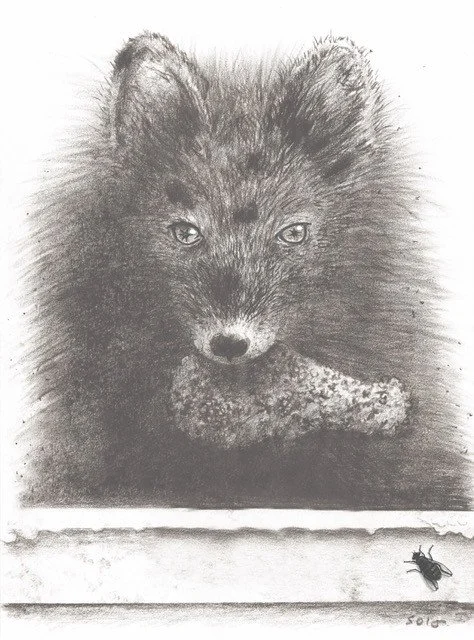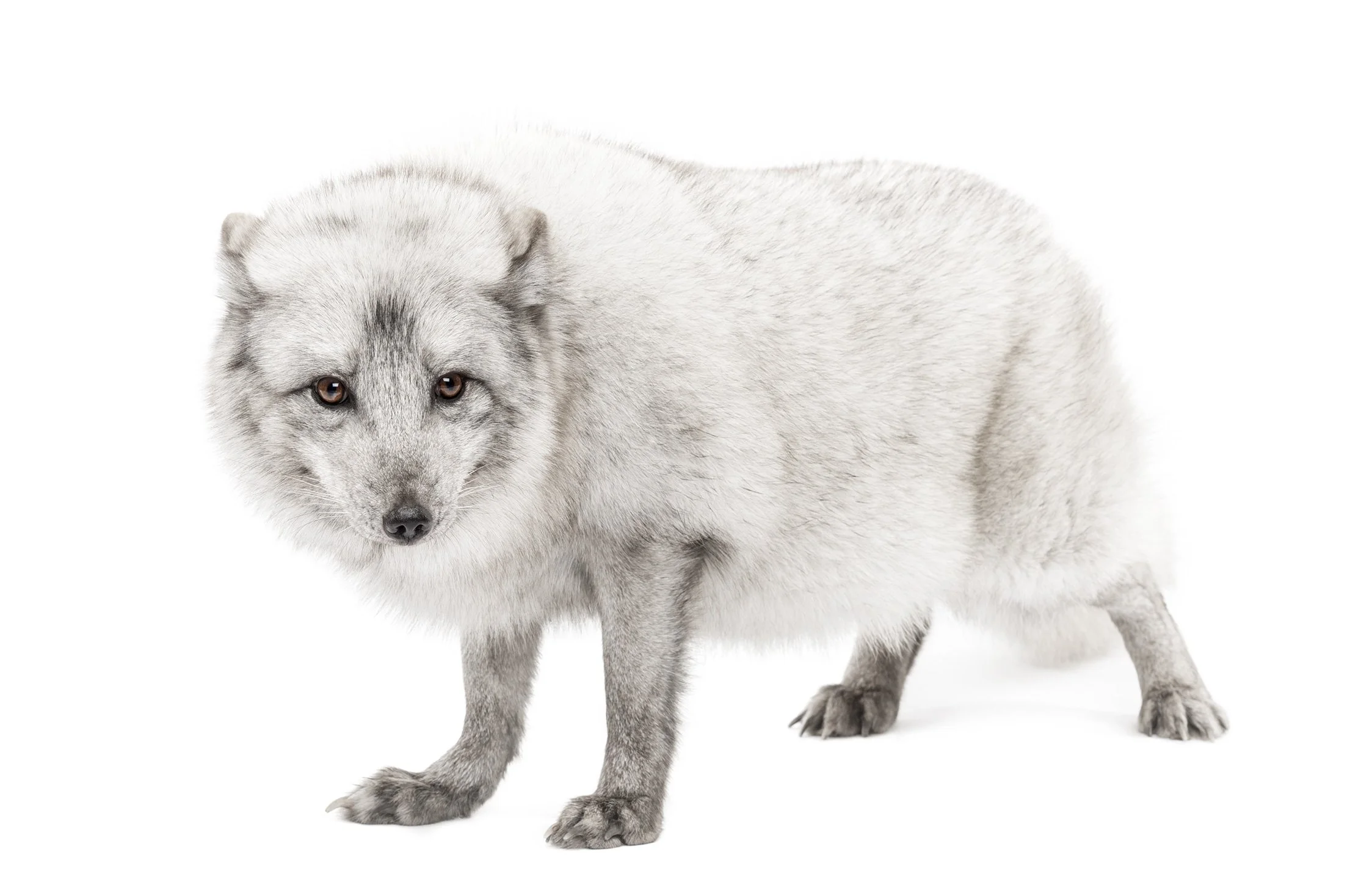Tail of the Gray Fox
Ikpikpuk River, 1979. A true story.
Midnight shift as an Ikpikpuk River oilfield camp bull cook. I was tromping through snow toward the camp’s dumpster with bags of trash slung over my shoulder. It was dark and the wind pushed against my parka. Snow shards, dry and sharp, were pelting my cheeks like crystal ice mosquitos as my moon boots crunched fresh holes into the snow.
Camp Ikpikpuk was a remote exploratory drilling operation in the National Petroleum Reserve in 1979. It was about 80 miles south of Utqiaġvik (Barrow.) The reserve was nicknamed Pet 4 though the only pets involved at the camp were a dozen or so crows and a couple white and red fox. Their eyes glowed occasionally from the glare of my headlamp.
Drilling for gas and oil was done during the winter months because it allowed for setting up winter camps and drilling rigs on top of permafrost rather than soft summertime tundra. The camp and drilling pad were about 1/2 mile from an ice runway built alongside the frozen Ikpikpuk River. It was just enough real estate to land the small aircraft that transported 40 men and their supplies back and forth from the main camp appropriately called Point Lonely.
The dumpster was within sight. Even with my head bent downward, my face still felt the stinging.
I imagined that it had snowed just once along the Ikpikpuk River and this happened centuries ago. Gusts danced the snow back and forth. The snow bank that was on the right side of the path today was the immortal snow from the left side yesterday. Same snow, drifting back and forth, to and fro, endlessly.
Walking back to camp, with far too many deep thoughts about ancient snow on my mind, I heard a commotion and looked back. I saw a fox climbing out of the dumpster with some sort of kitchen leftovers hanging from its mouth. I wasn’t caught off guard by the theivery as much as the color of this particular fox. It was a gray fox.
I’d only heard about red and white foxes on Alaska’s North Slope. I asked around and no one seemed to believe me with one person suggesting that it might be time for me to go home to rest for a couple of weeks. “The foxes in our area are either white or red or a combination of both,” he said.
I let it go for a while. Then, a few days later, I saw the same fox walking the tundra. The wind was more forgiving that particular afternoon. I was on trash duty again and this time it was during a two-hour window of daylight. I saw the gray fox as it prowled along keeping pace with my own steps. It was watching me carefully. More than likely, it was studying the trash bags dangling over my back. I was the delivery man.
Smart phones had not been invented yet so I wasn’t able to snap proof of the sighting with a camera.
I lifted the trash into the dumpster. My jacket sleeve brushed the inside edge of the metal lid. It came out covered with black ash. It was then that I realized how a gray fox had come to reside near our camp. Crew hands burned the trash in the dumpster every few days. When cooled down it left a coating of charcoal-dust inside the dumpster. The fox in question was rustling in the trash bin and popped out as a soot-stained, white and dirty gray fox.
My dreams of introducing a new animal species to National Geographic’s audience vanished.
I decided that, after sixteen weeks on this hitch, perhaps the deckhand was right. Maybe cabin fever is getting to me. It’s time for a couple weeks back home.
—dj—
Copyright protected by David Jensen
david@alaskaportraits.com


